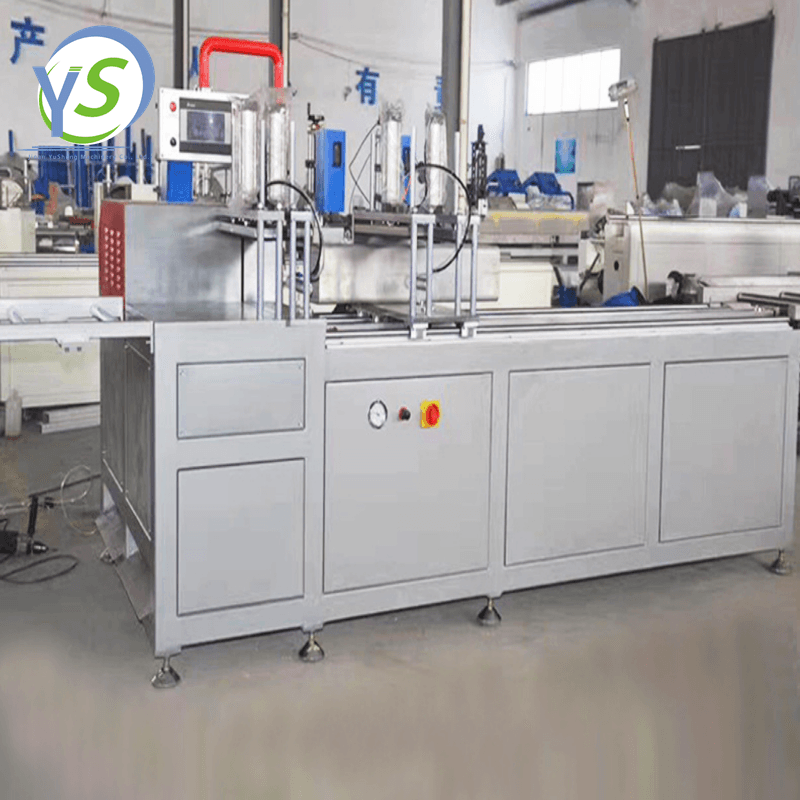In the rapidly evolving world of construction and home improvement, aluminum profile window and door machines have emerged as pivotal tools, revolutionizing the way windows and doors are manufactured. These state-of-the-art machines are designed to precision-cut, shape, and assemble aluminum profiles into sleek, durable, and energy-efficient window and door frames, catering to the diverse needs of modern architecture.
Core Functionalities and Features
At the heart of aluminum profile window and door production lies a suite of advanced machinery that encompasses cutting, milling, punching, bending, and assembly processes. Each machine within this ecosystem is engineered to ensure high precision, consistency, and productivity:
- Cutting Machines: Equipped with high-speed saws and laser cutting technology, these machines accurately slice aluminum profiles to specified lengths, minimizing material waste and ensuring perfect fits.
- Milling and Drilling Machines: Utilizing multi-axis CNC (Computer Numerical Control) technology, these units perform intricate milling and drilling operations, creating the necessary grooves, holes, and channels for hardware installation and frame assembly.
- Punching Machines: Automated punching machines quickly form holes for fasteners, handles, and locks, enhancing production efficiency and maintaining uniformity across all components.
- Bending Machines: Advanced bending presses and press brakes enable the shaping of aluminum profiles into complex curves and angles, essential for creating aesthetically pleasing and functionally superior window and door designs.
- Welding and Assembly Lines: Robotic or manual welding stations fuse profiles together, while automated assembly lines integrate glass panes, gaskets, and hardware into complete window and door units, ensuring a seamless production workflow.
Benefits and Applications
The adoption of aluminum profile window and door machines offers numerous advantages:
- Enhanced Precision and Quality: Automated processes guarantee precise dimensions and finishes, reducing human error and enhancing the overall quality of the products.
- Increased Efficiency: High-speed operations and reduced setup times significantly boost production volumes, allowing manufacturers to meet market demands more effectively.
- Design Versatility: The ability to process complex shapes and sizes makes these machines ideal for creating customized window and door designs tailored to specific architectural styles and customer preferences.
- Sustainability: Aluminum’s recyclability and the machines’ capacity for minimizing material waste contribute to more environmentally friendly manufacturing practices.
- Cost Savings: While the initial investment in such machinery may be substantial, long-term cost savings are achieved through reduced labor costs, material waste reduction, and increased productivity.

Industry Trends and Future Prospects
The aluminum profile window and door machine industry is continually evolving, driven by technological advancements and shifting market demands. Innovations such as IoT integration, real-time monitoring systems, and predictive maintenance are enhancing machine performance and operational efficiency. As the global push towards green building practices intensifies, manufacturers are increasingly incorporating energy-efficient designs and sustainable manufacturing techniques into their processes.
Moreover, the rise of smart homes and the integration of IoT-enabled window and door systems present new opportunities for machine manufacturers to develop solutions that cater to these emerging markets. The ability to connect windows and doors to home automation systems for enhanced security, energy management, and convenience is becoming a key differentiator in the competitive landscape.
In conclusion, aluminum profile window and door machines are indispensable assets in the modern construction industry, driving innovation, efficiency, and sustainability. As technology advances and consumer preferences evolve, these machines will continue to play a crucial role in shaping the future of window and door manufacturing.


